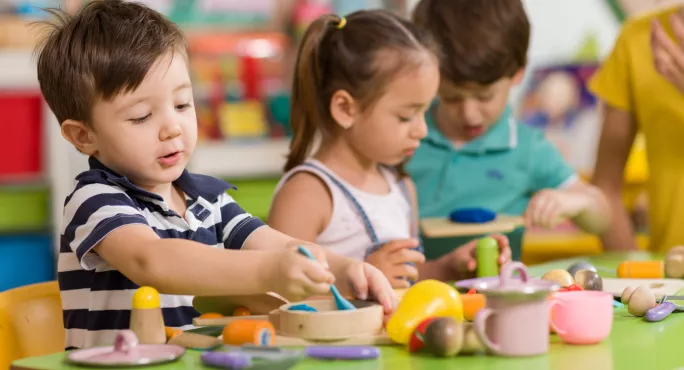- Home
- Why we need more hands-on learning in schools
Why we need more hands-on learning in schools

“There is a perception from top to bottom that doing things on paper, doing conceptual thinking, is at the apex of everything; that this is where you want to be,” muses Trevor HJ Marchand, emeritus professor in the Department of Anthropology and Sociology at SOAS University of London. “Working with your hands is seen as something for kids who did not quite make it in the classroom. “
Speaking on this week’s Tes Podagogy podcast (you can listen on the player below), he explains that this needs to change, urgently.
“We need to broaden our understanding of what knowledge and what intelligence is,” argues Marchand. “Until we establish a new values system, we are going to struggle to get the hands-on learning into the curriculum and have respect for it.”
Marchand and fellow guest Kester Brewin, a London-based teacher and writer, believe this shift is crucial for many different reasons. The first is that we will learn more if we try and engage more of the body in the taught experience.
Brewin explains that our first learning experiences are physical - playing with blocks, for example - and that the benefits of this immersive experience are multiple. Marchand details why this might be.
Physical learning
“When you perform a bodily task - a somersault, or walking in a straight line - there are a number of different regions of the brain that are stimulated,” he explains. “One area working very hard is the motor centres of cognition.
“What brain scans have recently been able to show is that not only are those motor parts of the brain being fired in the person doing the action, but it is also being fired in the person watching - they are understanding the movement not just in vision or on a conceptual level; they understand the movement by almost re-enacting it in our motor centres, telling us what it feels like to do that.
“A lot of the basic physical skills we learn through childhood we learn through watching. We take in that visual information and make it meaningful.”
Building in Yemen
Marchand cites a research project where he worked with labourers in Yemen building minarets as an example of how powerful this form of learning can be.
“The men I was working with were not literate and they were not mathematically trained, but they were building highly complex structures. There were no plan drawings and no engineers. But they talked about proportionality, and the aesthetics of proportions.
“That set me on a path to understand the mathematics on site, how they learned all these things - proportion, balance, symmetry, asymmetry. It was all by watching and physically trying things out.”
This led Marchand to look at early maths pedagogy and how extending hands-on learning throughout school can broaden the skills of young people.
Early learning
“There is an argument that when children are engaged in making things they are mathematically engaged in the world,” he explains. “If we can keep the making of things as part of the school curriculum, it allows individuals to develop their own strategies to solve problems.
“There is never one solution to a problem - it is always contextual. By encouraging young people to explore and experiment with their hands, with the materials, with the tools they work with, they come up with their own solutions. It is when we come up with our own solutions that we hold on to the answers in a more confident way; they are ours, we own them.
“This is extremely important for children as they need to be confident from an early age. And mathematics is one of those areas where children lose their confidence most quickly. So how do we engage them so they feel mathematics is part of their lives and part of the world around them?”
Financial pressure
Both Marchand and Brewin believe that the narrowing of curriculum and the limited time given to more physical subjects like D&T, drama and art - mostly due to financial pressures and accountability reasons - is robbing children of all of the above and more.
“Do we feel part of the world we are in? I think that is being lost in schools when we take away the dextrous points of access,” says Brewin. “The reason they are being taken away is because, for example, D&T is expensive. But the danger is the pursuit of ‘academic results’ will not actually produce the results as children will only be able to solve a problem one way.”
In the podcast, they go on to discuss vocational education, training and how physical learning can be better incorporated into the classroom. Marchand is unequivocal that budgets cannot be an excuse.
“We cannot afford not to invest in this,” he concludes. “Britain has prided itself for so long on its ability to be creative. Things are made elsewhere but we come up with the solutions. If we want to continue to be a leading force in innovation, we need to make the investment [in subjects like D&T].
“There is a long history in this country of leaving it to industry to train people up; that it is not something we need to formally invest in. But we absolutely do: in France, Germany and Switzerland, they invest and they are leading the industrial way.”
You can listen to the podcast on the player above, or type ‘Tes - the education podcast’ into your podcast platform (including Spotify)
Keep reading for just £1 per month
You've reached your limit of free articles this month. Subscribe for £1 per month for three months and get:
- Unlimited access to all Tes magazine content
- Exclusive subscriber-only stories
- Award-winning email newsletters



